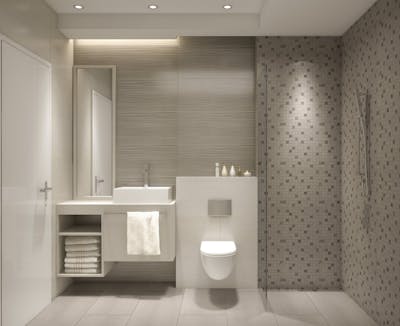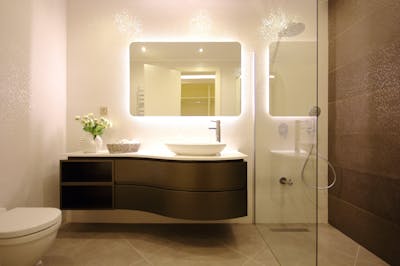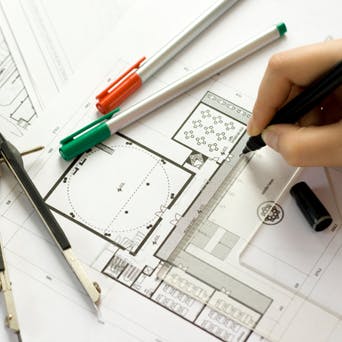Shower Tray Buying Guide | More Bathrooms
Published: 21 October 2021
Once a nation of bath lovers many of us are now opting for a steamy shower over a long soak which often deserves a shower upgrade.
With the variety of shower designs and trays available however it can often be a confusing task to know which shower tray to use.
This shower tray buying guide breaks down the different shower tray options available and everything you need to consider.

Shower Tray Options
If you’ve started searching for a shower tray you’ll know there is a plethora of options available in a range of shapes, sizes and materials.
We've broken down the main options below:
Shower Tray Shapes & Sizes
When deciding on your shower tray dimensions you will need to consider whether it is suitable for the size of your bathroom alongside whether the size and shape is comfortable for the user.
Rectangular Shower Trays
Rectangular shower trays are typically found as part of a walk-in shower with an open ended shower entry or as part of a shower enclosure which has a variety of door entry options.
Rectangular shower trays create an extended showering area making this option better suited to bigger bathrooms. Although if you do have your heart set on a rectangular shower tray don’t worry as they come in a variety of sizes from 800mm to 2000mm in length x 700mm to 1000mm in width.
![]()

Square Shower Trays
Fit within a shower enclosure, square shower trays are good choice if you have a small and or awkward shaped bathroom as they can often be fit within an unused corner. They can also be fit with bi-fold doors if you don’t have the space for an outward opening shower door.
Square shower trays typically range from 700mm to 1000mm in size, although larger sizes are available.

Quadrant Shower Trays
Also fit within a shower enclosure in a corner space, quadrant shower trays consist of a curved front that maximises the available showering area.
Quadrant showers are typically available in sizes 760mm, 800m or 1000mm.
You can find out more information about shower cubicle options in our shower cubicle ideas article.

Shower tray materials
Whilst considering your shower shape and size when deciding which shower tray to use you will also need to choose the shower tray material you feel is best for your bathing needs.
Acrylic
The most popular shower tray material, acrylic showers are lightweight, durable, easy to clean and naturally have a non-slip surface.
Acrylic is also often used as a coating on top of other shower tray materials due to its non-slip properties.
Ceramic
Like acrylic shower trays ceramic trays are durable and relatively easy to clean. You'll need to consider however that like other ceramic items within your bathroom, they can be cold to touch and subject to chips if not handled correctly.
Stone Resin
A strong and sturdy option, stone resin shower trays are becoming a popular choice due to their contemporary look and feel and their durability.

Raised vs Low Shower Trays
Dependent to your bathroom’s pipework you will need to choose between a raised or low level shower tray.
Low level shower trays also known as flat or level access showers work best if your pipe work is set into the floor, whilst raised shower trays are required if you need make space for any required pipework above ground.
To find out further information on which shower tray to use or how you can install a shower tray as part of our full bathroom design, supply and installation service you can call us or book a free design appointment.
Share this Post








.jpg?auto=compress%2Cformat&cs=strip&fit=clip&h=400&ixlib=php-1.1.0&w=400&s=c80ddb61e006377b43ef4bfe9a05bfa8)


















